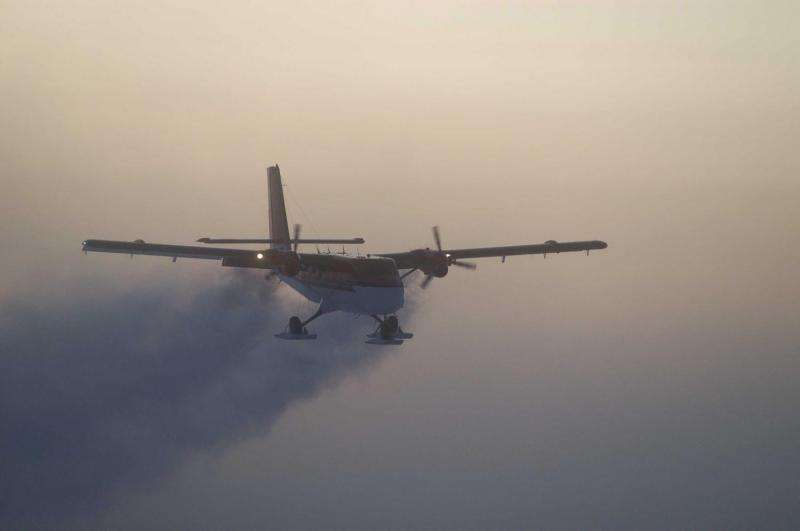South Pole medical evacuation flight launched

Officials with the National Science Foundation (NSF) have launched a medical evacuation flight to NSF's scientific station at the geographic South Pole.
After comprehensive consultation with outside medical professionals, agency officials decided that a medical situation at Amundsen-Scott South Pole Station warrants returning a member of the station's winter crew to a hospital that can provide a level of medical care that is unavailable at the station.
The patient is seasonally employed through the Lockheed Martin Antarctic Support Contract (ASC), the prime contract for operations and research support contractor to NSF for the United States Antarctic Program (USAP). NSF is not releasing any further personal or medical information to preserve the patient's privacy.
Two propeller-driven Twin Otter aircraft, operated by Kenn Borek Air, Ltd., a Canadian firm that provides contractual logistical support to the Antarctic Program, left Calgary this morning on the first leg of an intercontinental flight to the Pole.
The mission will be highly weather-dependent and the current best-case scenario is that a plane would arrive at Amundsen-Scott South Pole Station no sooner than June 19.
Drawing on the support of other national Antarctic programs, NSF has approved a plan under which the aircraft will fly from Canada via South America to Rothera, a research station on the Antarctic Peninsula managed by the British Antarctic Survey.
One of the aircraft will remain at Rothera to provide search-and-rescue capability, while the other aircraft will fly the roughly 1,500 miles from Rothera to the Pole to pick up the patient.
It currently is mid-winter in Antarctica. Normally, flights in and out of Amundsen-Scott South Pole Station are not planned between February and October due to the extreme cold and darkness.
Kenn Borek, however, has the experience of flying two similar medical evacuation flights—one in 2001 and another in 2003.
The Twin Otter aircraft that Kenn Borek flies are able to operate in extremely low temperatures and are able to land on skis. As there is no tarmac runway at the South Pole, the aircraft must land in total darkness on compacted snow.
Because of the complexity of the operation, the evacuation will require contributions from multiple entities involved in the U.S. Antarctic Program including weather forecasts from the U.S. Navy's Space and Naval Warfare Systems (SPAWAR) Center Atlantic; expertise from the University of Texas Medical Branch; and various contributions from ASC, NSF's Colorado-based Antarctic logistics contractor as well as assistance from other nations.
Amundsen-Scott is one of three year-round stations NSF operates in Antarctica in its role as manager the U.S. Antarctic Program, the nation's research program on the southernmost continent.
There are 48 people wintering at Amundsen-Scott, performing a variety of tasks related to station maintenance and science. These include overseeing long-term monitoring of the atmosphere and its constituent gases—such as methane and carbon dioxide—and scientific observations by two radio telescopes; the 10-meter South Pole Telescope and the BiCEP2 telescope, which are using the Cosmic Microwave Background to investigate the early history of the universe, including investigations of dark energy and dark matter that makes up most of the cosmos. Also included is the Ice Cube Neutrino Observatory, which is designed to observe subatomic particles, produced by some of the most violent and exotic cosmic phenomena, including black holes.
Provided by National Science Foundation



















